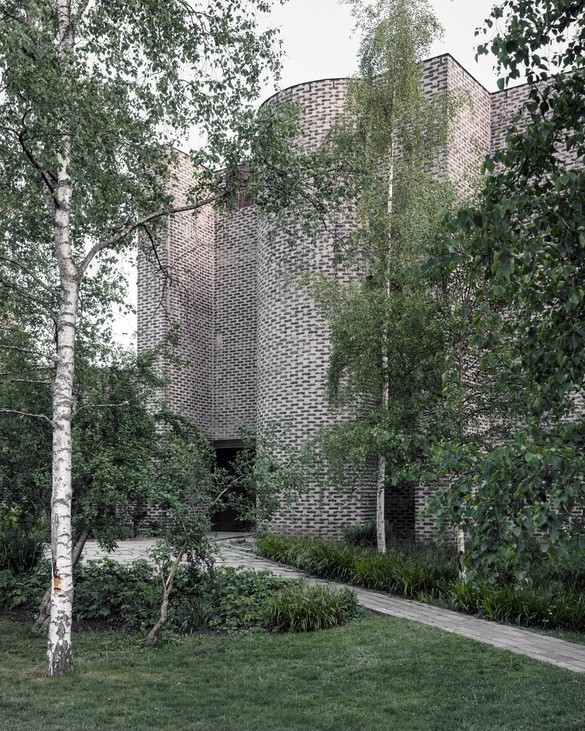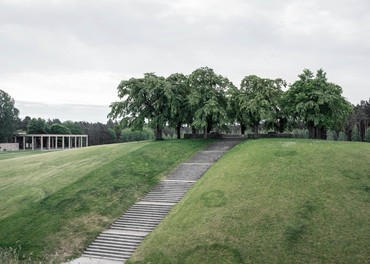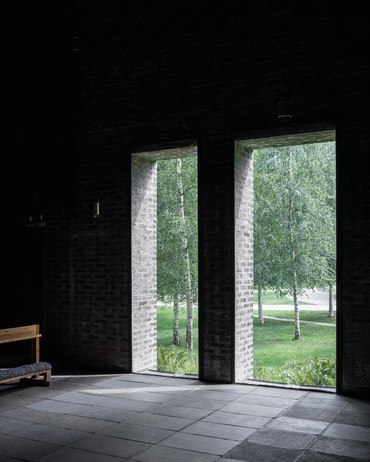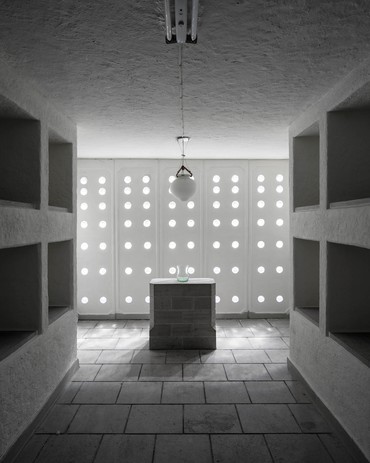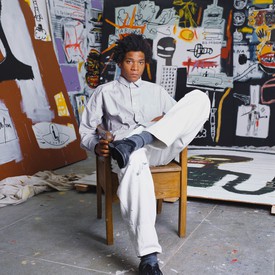
Adam Caruso was born in Montreal and studied architecture at McGill University. He established Caruso St John Architects with Peter St John in 1990. The practice has offices in London and Zurich and has built throughout Europe, undertaking projects ranging in scale from major urban developments and cultural projects to intricate interventions in complex historic settings.
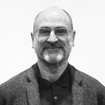
A director at Gagosian since 2002, Mark Francis was formerly founding director and chief curator of the Andy Warhol Museum, Pittsburgh. He has been a curator at the Centre Pompidou, Paris; the Fruitmarket Gallery, Edinburgh; the Whitechapel Art Gallery, London; and the Museum of Modern Art, Oxford, England.
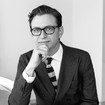
Kieran Long is the director of ArkDes, Sweden’s National Centre for Architecture and Design. He has twenty years of experience in architecture and design, first as a writer, critic, and teacher and more recently as a curator. In 2012 he worked with David Chipperfield to curate the Venice Biennale of Architecture.
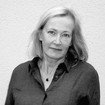
Anna Nittve is an art critic and art historian based in Stockholm. As a regular contributor to Svenska Dagbladet, she reviews exhibitions in Sweden and abroad.
Mark FrancisKieran, to start, would you like to say something about the purpose and range of the exhibition?
Kieran LongThe project began more than four years ago, probably the first day I arrived in Stockholm as director of ArkDes. The fact that the museum had Lewerentz’s archive was one of the reasons I’d taken the job, quite honestly—it’s a large archive, somewhere near 17,000 objects in total. While some of the materials have been shown in various contexts, there’s never been a comprehensive exhibition of Lewerentz’s work, and there’s never been a truly comprehensive book.
I grew up with generations of architects in London who were very influenced by Lewerentz. Adam, you’re partly responsible for this, due to your time teaching. They’d travel to Sweden to see the projects, and they kept a huge passion for his work alive. His name was everywhere when I was first learning to be an architecture critic and journalist, but there was also a mystery about his work. As I write in the exhibition catalogue, there were architects, especially overseas, for whom Lewerentz felt like their own discovery. It was like, Wow, I’ve found this practitioner, and he’s doing all these things that mainstream modernism doesn’t do.
In Sweden it’s uncommon for a museum—and this applies to ArkDes—to do monographic exhibitions at all. It’s a bit of an unfashionable format, and I guess I wouldn’t be doing a monographic exhibition about a dead white man if the museum had done it before. Given that absence in the institution’s history, it felt like we had to do the basic work of researching the life and work of this very great architect, using the original material, and also of giving the architecture culture here in Sweden the opportunity to gather around this artist and to acknowledge his work, see it again and see it afresh, and to satisfy the fascination and passion of practitioners around the world who love his work.
So those were the starting points. We’ve gone back to all of the original material we have, I’ve traveled up and down the country to every archive that has anything to do with Lewerentz in it, we’ve located every object—we think—that Lewerentz or his office touched. We’ve had to write his life story without the benefit of living testimony. One can’t help but wish that the work had been done twenty years ago, when more of the people who knew and worked with Lewerentz could have filled in some of the missing pieces. But it’s a very large presentation, by architecture-exhibition standards—just over 500 objects. In the book there are around 900 objects, out of 17,000 total. It’s a fraction of the whole, but we think a comprehensive, deep attempt to represent the full range of his work.
Our motivation in telling the story is, we hope, captured in the exhibition’s title: Sigurd Lewerentz: Architect of Death and Life. If you know anything about Lewerentz, you most likely know about his cemeteries and churches. They’re fantastically powerful works of architecture and they have to do with our existential selves. They’re deep, complex, rich works of art about what it means to be a human being. That’s the death part. But in our research we also focused on the late 1920s and 1930s, when Lewerentz was part of a vital architecture culture in Stockholm. He was inventing the modern metropolis in Sweden, alongside a very talented generation of architects. He traveled widely in Europe and brought back ideas from Paris, from his student life in Berlin and Munich, from Zurich, and from Italy. He was a decisive influence on the Stockholmsutställningen, the Stockholm Exhibition of 1930—the fabled entry of modern architecture into Swedish culture in a very big way. We focused on that moment to balance the existential work with the sense of an architect deeply engaged with the life of the city.
Anna NittveEven the death side of the equation, I’d say, is more complex than existential questions. While he certainly worked on many cemeteries, when I look at, for instance, Skogskyrkogården, the Woodland Cemetery in Stockholm [1915–1961], or Östra kyrkogården, the Eastern Cemetery in Malmö [1916–1971], I see reflection, meditation; I see perspective, scale, and vanishing points. I don’t see it so much as grief, I see more the sacred and its ritualization through art.
KLAbsolutely. There’s much more than just gloominess in the cemeteries. Through our work, I think, you can see that a little bit more in its historical perspective, where it was this amazing moment of creativity just before modernism arrives. In the exhibition we have a short film showing Skogskyrkogården over which will be playing “The Death of Aase” from Peer Gynt [1875], by the Norwegian composer Edvard Grieg. We have a competition drawing for Skogskyrkogården on which Lewerentz and his collaborator Gunnar Asplund drew a stave of music from Grieg, linking the design directly to probably the most important national romantic artist of any art form in the Nordic region. There’s so much artistic richness in the conception of the cemeteries that’s not just to do with death.
Adam CarusoThe character of those cemeteries was part of a transnational movement about death and cremation, and a critique, really, of more classical cemetery design. Asplund and Lewerentz invented a lot, for sure—there are these elements of the role of walking and perception in the landscape, and they’re actually very different in Stockholm and in Malmö, partly because the settings are so different—but the cremation movement, and the idea that one would commemorate death within a natural setting, was a bigger cultural movement, and one that had particular resonance with the romantic making of national identity that was so strong in the Nordic countries. It means that death isn’t only about grieving, it’s also about contemplation, about the cycles of life, things that all religions touch upon.
I think I told Kieran this story when we started working on the project. My father is an architect. The only Lewerentz building he knew—and he graduated in the late 1950s—was the Malmö Stadsteater [1944], a theater that’s by far Lewerentz’s most widely published project in the postwar modernist narrative. And the reason he knew about it was because it was incredibly innovative technically.
KLEvery journalist in Europe came to Malmö to see it, and it was published very widely; it was on the front cover of L’architecture d’aujourd’hui, a very important publication at the time. And of course, what was celebrated in those publications was the auditorium, which was Lewerentz’s key contribution—I mean, he won the competition for that building three times, and then he didn’t really get to build what he wanted, but the auditorium was definitely his creation.
ACThe technical research that went into making the theater was incredible.
KLAnd there are extraordinary things in the design that you could say play into a Swedish mythology, like the conditions for people back of house. There are a lot of drawings relating to head-height clearances and natural light for the working environment; it’s one of the few theaters in the world that has natural light in the back-of-house spaces, and that was thought of as a humane thing.
The office building for the Riksförsäkringsverket, the National Insurance Board [1932], was decisively important as well. It’s categorically different from other modern office buildings; it’s a palazzo type, in a way, with three facades facing the city—all more or less identical, one with the entrance in it—and then an oval glass curtain-walled interior. There’s nothing like it in Sweden.
ACWhat’s very particular about it is the way it’s faintly classical, but it’s not deco at all, because it has this incredible sense of modernity. It’s also where he first applied what became Idesta, the architectural-hardware firm he founded; it deploys this steel-and-glass assembly system extensively. It has a very particular atmosphere.
KLAnd quite an extreme atmosphere.
If you know anything about Lewerentz, you most likely know about his cemeteries and churches. . . . They’re deep, complex, rich works of art about what it means to be a human being.
Kieran Long
ANWe could say that Lewerentz used styles. He was never really into them, but he used them. He used classicism in the Uppståndelsekapellet, the Resurrection Chapel in Skogskyrkogården, but it’s not classicist. The famous villa that he did in Falsterbo in the 1930s, when functionalism was so in fashion in Sweden, started off in functionalism but ended up in something that you could say was almost Brutalist. He allowed himself to experiment freely and he left the bricks and the construction exposed, instead of hiding it behind plaster, as was common in functionalism. I would say he used styles in the ways that suited him, not according to the book.
His work is a lot about sensitivity for light, for darkness, for shadows. I would imagine that growing up in northern Sweden in the dark forest must have created this extreme sensitivity for it. You see this in the Uppståndelsekapellet, where we have the darkness and a lot of white, white, white—
ACWhite inside, yes.
ANAnd when it comes to the two churches that he did late in his life, the Markuskyrkan in Björkhagen [1956–60] and the Sankt Petri Kyrka in Klippan [1962–66], which are both so dark—he’s using daylight to set the focus on both function and architecture, to highlight both the pulpit and the rough brick walls.
KLWe have Lewerentz’s library at the museum—it plays a small role in the exhibition—and you can see that he was extremely broad in his architectural interests. He didn’t talk a lot about his work, but through the books you find references that lead you to wonder what influenced what. The brick in the late churches, for example—suddenly he was making these extraordinarily free brick buildings. Where did that come from? History has judged them curiosities of a late-flowering master, but they have lots in common with Danish architecture of the modern period; he had many Danish architects in his office, and earlier in his career he was much more recognized in Denmark than in Sweden, so it could have been a material reference that he picked up there. Or, he had an office in Stockholm in the Centrumhuset building, by Cyrillus Johansson, which was made of brick; that could have been the reference. Then in the library, books fall open at certain pages, and you wonder. You see lots of Italian Renaissance churches with brick courtyards—bricks from different eras, bits of buildings jammed up against one another—and then you see a lot of Islamic architecture in brick and in tile. We’ll never know for sure, but Lewerentz was a very cultured person and a very cultured architect, with wide references and a freedom in using them. He was by no means dogmatic in any of his stylistic tics.
ACThe other thing about Lewerentz is his fascination with how things are made—technically but also artistically—and with their capacity for affecting the person who’s going to be in and around the building. What’s so interesting about him to me is that even though he didn’t build an enormous amount, his work is extremely diverse. I wouldn’t say it’s eclectic, though, because certain themes are consistent—like getting the most out of a material assembly, or the way a single material affects you when you’re confronted by a building, whether it’s stucco in the Riksförsäkringsverket or brick in the late churches. There’s a lot of freedom and diversity in his work.
MFKieran, you write in the book about the idea that his work is anachronic—it’s not so much to do with a particular time, although obviously you can trace his career from early to late, but there are connections with ancient cultures, or with ancient cultures that are still alive in certain ways.
KLAll of Lewerentz’s work has a sense that it produces its own time, that it has its own time scale. When you’re there, it calls to you from the future or from the past in some strange way. That’s most clear to me at the Markuskyrkan, where the floors are this extraordinary layout of found and recycled waste, terra-cotta materials—it’s through every room in the church and extends out into the landscape. There’s a clear relationship to Cosmatesque floors in Roman and Florentine churches, but in a mass-produced material that’s broken and rejected. You feel this Renaissance reference that’s filtered and played down and buried in the garden.
One thing that’s so extraordinary about it is that it doesn’t read like a pastiche, it reads like a quiet whisper from another time. There’s something very beautiful and rare about that. And I think that happens in the 1930s work as well.
ANI think it’s important to consider Lewerentz’s role as a landscape architect, because his starting point for his buildings was where to place them: could the landscape be preserved, or could he create a “natural” Swedish landscape? The reshaping of the land at Skogskyrkogården, the creation of the hill that you see when you enter through the huge port, is more an antique Italian way of designing the landscape, but you also find a more Swedish aspect in another area of the same cemetery with mixed natural forest. The views you get in the cemetery—I don’t think it’s too much to relate them to Land art. I can see correspondences between Lewerentz’s landscape architecture and the Land art work of, for example, Walter De Maria and Michael Heizer. I am thinking about their common interest in perspectives and viewpoints, scale and vanishing points.
ACI would say that Lewerentz’s landscape sensibility, and it was in the air in Sweden in his time, is an English sensibility. I think Skogskyrkogården is a picturesque landscape in the tradition of Humphry Repton and Capability Brown. You try to be as efficient as you can, so you use the things that are there—the mixed forest, for instance, and certain main features of the topography—but then you’re also not afraid of moving land in order to make the narrative you’re talking about happen. I think Malmö, although it’s a much more classical landscape, also works in a picturesque way. There’s a series of episodes that are all about walking, about seeing things close by and then seeing things in the distance, and going toward them and anticipating them. For sure, some Land art works in precisely the same way.
KLI would agree about the landscapes to a degree, but I don’t think the picturesque is exactly where Lewerentz was coming from—partly because he brought so much back from Germany, so there’s also clearly a Romantic sensibility driving at least Skogskyrkogården, I think. At Östra kyrkogården, it’s interesting to think about the major gesture, an existing berm that’s clarified and made into something quite intimate and physical. Unfortunately, when you visit the cemetery today you don’t have quite the same experience of it, because the entrance is no longer where Lewerentz planned it. You tend not to go up on that extraordinary grassy berm.
It seems to me that in all of the cemeteries, Lewerentz wanted to do less and less as he got further into the design process. They began very bombastic: in Östra kyrkogården, a very significant classical building was proposed on top of the ridge. In the end, though, it was taken away, the ridge has nothing on it at all, it has buildings built into it. So I agree that the landscape is a starting point for Lewerentz, but it’s also something he got to by discarding buildings, taking away interventions, and leaving more and more of it the way it is. I think you see that as well in his competition project for the Kviberg cemetery in Gothenburg.
All of Lewerentz’s work has a sense that it produces its own time, that it has its own time scale. When you’re there, it calls to you from the future or from the past in some strange way.
Kieran Long
ANMy understanding is that in his earliest works, his drawings were extremely detailed and precise, but as he grew older, or as he grew more wise or more mature, he started to work in a more fluid and artistic way. When construction started on the Sankt Petri Kyrka, for example, the drawings weren’t even completed, and he worked with the bricklayers to capture the light. If the walls didn’t meet the light in the way he expected them to, they had to tear down what they had built. This was in the mid-1960s, when he was almost in his eighties and the Minimalists were young. Lewerentz put up the same type of restrictions as the Minimalists and let those restrictions influence the form. He decided, for instance, that the bricklayers were never to be allowed to cut a brick, and this steered the outcome of the building. He also took advantage of opportunities that happened during the building process, so it wasn’t all set in advance.
KLThere’s certainly a game going on with being in control and not in control of certain processes in the late churches, but it’s even more complicated than that, it’s layered back in on itself in so many complex ways, especially for a historian. My favorite example is the deep collaboration he had with artists at some of the crucial moments in the building of the Markuskyrkan. In the competition entry, for instance, it’s clear that the baptismal font is a critical part of his thinking. Even in the competition drawings, he draws it in several different locations; there’s no mistaking that it’s one of the crucial hinges, spatially and artistically, of the church. In the end, he effectively gave away the job of designing it to the artist Robert Nilsson, and Nilsson I think made an extraordinary Minimalist artwork, a kind of bush-hammered piece of stone with curves at the bottom, just a circle for the font, moved very slightly to one side, where the priest would stand. And the whole piece, which is basically a quadrilateral block, is turned at not quite 45 degrees. This font becomes a hinge around which the whole drama acts, and Lewerentz didn’t design it himself. He knew that artists are better at some of those things, and brought the very greatest ones in.
MFI was wondering whether Asplund’s death, in 1940, might have freed up Lewerentz’s imagination in some way?
KLIt’s an interesting thought. I think actually one thing that’s very clear is that Lewerentz, almost his whole life, was considered the best living architect in Sweden by other Swedish architects, probably including Asplund. It sounds like a big claim, but he was clearly an extraordinary talent in this context. I do think Asplund’s death meant a lot to him—they had a falling out in 1934, and I think he regretted that they didn’t reconcile before Asplund’s untimely death. But I think what led to his later freedom was that the work he’d done was really good, he had good clients, and he was able to do what he wanted to do. He had an extraordinary client at the Markuskyrkan, who protected him and collaborated with him and generated ideas for him. There’s a legacy of loving that building that you can feel when you go there today. So I think it was really, really good clients who recognized his artistic value.
MFWhat can we say about how interesting his work is to a generation of younger architects today?
ACA few years ago, someone asked me how I first saw Lewerentz. I knew about Skogskyrkogården at school, but I discovered Lewerentz, really, through an issue of Quaderns [d’Arquitectura i Urbanisme]. This was in the late 1980s, early 1990s, when Josep Lluis Mateo was the editor and it was really the most interesting architectural magazine. I was working for Florian Beigel at the time, and we got this issue with an article by Claes Caldenby in it, and also excerpts from Janne Ahlin’s book on Lewerentz. I remember Florian and I spending two hours poring over these six pages from the book. Florian was completely smitten by the work, which connected to so many things he was interested in. We very quickly copied the windows from the late churches for a project.
Then [Colin St John] Sandy Wilson’s book came out, so that was another narrative, a more phenomenological reading of Lewerentz’s work.
A few of us were teachers so our students got interested in it as well. It’s interesting that it was in Britain that there was this real attention to Lewerentz’s work, because much later, in Holland and in Switzerland, there were reassessments of Alison and Peter Smithson, let’s say, and Lewerentz was part of that somehow. His connection to the Smithsons and to Brutalism is rather slight, I think, but they knew the work, they talked about it.
And what’s his relevance today? I don’t talk to my students so much about Lewerentz anymore, but I think it’s so important that this show is happening, and it has to happen in Sweden, because, as Kieran said, there’s a recognition in Sweden of how great this architect was. He was one of the great artists working in Sweden in the twentieth century.
ANI don’t think I’m exaggerating if I say that Lewerentz created a baseline in Swedish architecture, and the generations of architects coming after him somehow had to relate to him. It happened both directly and indirectly. We know that the KTH school of architecture in Stockholm, which opened in 1970—a very controversial and famous building, built by a team of the school’s faculty in a Brutalist style—was deeply influenced by Lewerentz.
ACIt’s such a great building. I first met Bengt Edman when he was teaching there, so we did crits for two days in the court space of that building.
ANExactly—indirectly, younger generations of architects are also influenced by Lewerentz.
KLThe inheritance of Lewerentz in Sweden is extremely interesting. There are three important architects from Lund who kept Lewerentz’s flame alive for a long time: Bernt Nyberg, Bengt Edman, and Klas Anshelm. They all knew him at the end of his life and worked or collaborated with him to different degrees, and of course all three of them are very interesting architects. The thing I tried to point out in my introduction to the book, though, is that they had time-specific reasons for needing Lewerentz to be a certain type of architect. For them he represented artistry and the extraordinary achievements of the field, but also craft and commitment to process and to building, at a time when the Swedish construction culture was industrializing and removing the possibility of architects being in charge of construction. So they framed his legacy in that context. There’s nothing wrong with that, it’s not incorrect, but with this project we’re trying to expand the focus. Lewerentz was many things in addition to being extraordinarily committed to craft processes. I hope two kinds of argument will come out of this project: one about the artistry of our field, what it means to be a great architect, and the other about what it means to have a process like Lewerentz’s. I hope that can filter into a contemporary culture dominated by computer drawing, dominated by things that go very quickly to their conclusion. Lewerentz represents a whole set of other things, which I hope will be an influence.
In recent years a series of architects from outside the mainstream modern movement have been rediscovered in major exhibitions: Lina Bo Bardi, Charlotte Perriand. I hope this exhibition will contribute similarly to broadening the understanding of what the mainstream of the modern movement is, and will bring it to visibility for a new generation of architects who can do whatever they want with it. I don’t know what they’re going to do based on that, but I think it’s our responsibility to bring it forward in a forthright, reliable, hopefully spectacular way that will make people passionate about the work again.
Sigurd Lewerentz: Architect of Death and Life, ArkDes, Stockholm, October 1, 2021–August 28, 2022
Photos, unless otherwise noted: Johan Dehlin, courtesy ArkDes, Stockholm
